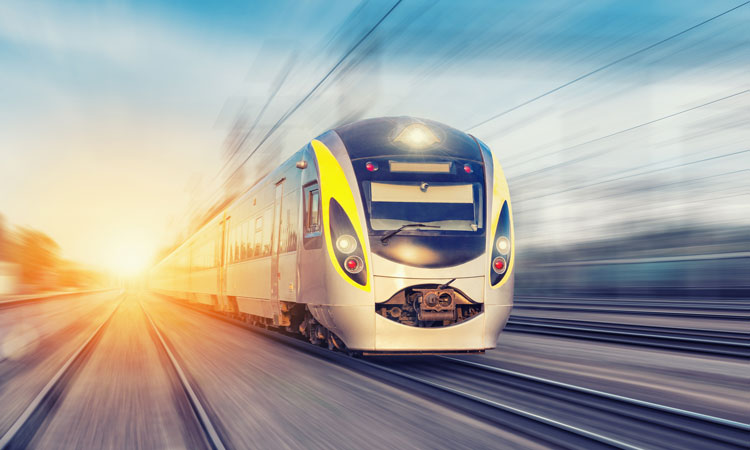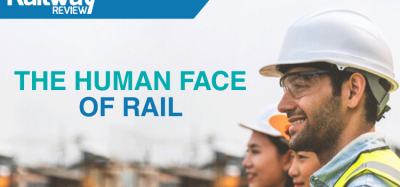Protecting rail assets with lifecycle security and surveillance technology
Posted: 11 November 2021 | Carl-Thomas Schneider, Hexagon, Jack Williams | No comments yet
In this interview with Global Railway Review, Carl-Thomas Schneider, Vice President of Business Development for Hexagon Geosystems and Jack Williams, Director of Portfolio Marketing for Hexagon’s Safety, Infrastructure & Geospatial division, explain how Hexagon’s new Security & Surveillance portfolio for rail unites 3D surveillance systems with best-in-class security, dispatching and collaboration software.


What are some key rail industry challenges that point to the need for a lifecycle incident management offering – from detection to assessment and response, to coordinated action?
In an effort to reduce carbon emissions and road congestion, rail traffic is expected to double by 2050 on a global scale. While this points to a bright future for the industry, it will also require heightened safety and security measures. And that increased demand will cause overcrowding, require increased communication measures and create an environment where safety and security disruptions are more common.
We believe that the only way to face these challenges and achieve safety, security and situational awareness across the rail network is by seamlessly and bidirectionally integrating and connecting infrastructure, assets and people. And the best way to do this is by moving away from traditional, manual processes for threat detection and assessment analysis, as well as by approaching incident management and response from a coordinated perspective that involves every critically relevant department.
Please tell us about some of the technology trends that are driving this move.
…3D security surveillance is becoming the new ‘must-have’ for high-value, sensitive areas in rail networks, such as tunnel entries and train depots.
First, 3D security surveillance is becoming the new ‘must-have’ for high-value, sensitive areas in rail networks, such as tunnel entries and train depots. Second, the rail sector is poised for investment in automation and digitalisation for leveraging solutions that enhance customer satisfaction, which is a key priority for rail providers. This includes increased investment in IoT devices and sensors and added efforts to integrate and centrally house these devices in order to gather more insights from their data.
For example, these types of innovations can minimise unplanned rail disruptions (URDs), as well as restore services faster when an incident occurs. Increasing customer satisfaction and minimising the impact of URDs are at the heart of these trends.
Tell us how Hexagon’s Security & Surveillance portfolio addresses these rail industry trends.
As we mentioned, with rail traffic increasing exponentially, the need for preventing, mitigating and addressing security disruptions is more important than ever.
Hexagon’s Security & Surveillance portfolio for rail helps rail operators better protect their assets, passengers and freight to reduce disruptions and improve safety and customer satisfaction. This portfolio is comprised of an integrated set of solutions proven in rail operations around the globe and unites 3D surveillance systems with best-in-class security, dispatching and collaboration software.
Could you please break down the solutions in the portfolio?
Of course. The great thing about the portfolio is that it offers a complete lifecycle solution for overall incident management and empowers operators to detect, assess and respond to threats and incidents. It also allows rail providers to collaborate with internal departments and outside organisations when needed.
For detection, Leica BLK247 and accur8vision 3D security and surveillance systems go beyond traditional 2D security systems by integrating LiDAR, thermal sensors, video and 3D planning and tracking software for high-value areas, perimeters and zones, such as tunnels and rolling stock.
When it comes to assessment, the HxGN OnCall Security | Guardian solution provides rail security operators and command centers an actionable, common operational picture for disparate alarms, cameras, sensors, IoT devices and video feeds to deliver situational awareness for real-time event monitoring.
For incident management, HxGN OnCall Dispatch is a computer-aided dispatch solution with embedded, assistive AI that allows rail security teams to dispatch additional resources when major incidents or unique events occur within the network.
HxGN Connect then provides a secure, collaborative workspace where rail security teams can securely receive and share data and create collaboration channels regarding network operations or rail disruptions with internal teams, across all stations or with regional partners.
Xalt’s data integration platform can interface to diverse data types, such as sensors, video management systems, alarms and assets, as well as the message formats used across your rail network. This technology powers all solutions that make up the portfolio.
What are some additional benefits of this portfolio?
…rail providers no longer need to manage solutions from multiple providers. They can now work with a single, trusted partner for all their security and surveillance needs.
While this is an end-to-end security and surveillance portfolio, it’s also a la carte. Depending on the need, rail operators can implement one or more of the solutions within the broader portfolio.
Along the lines of broad usage, these solutions span everything from 3D detection and tracking, to threat assessment and monitoring, to dispatch and collaboration during disruptions.
In addition, rail providers no longer need to manage solutions from multiple providers. They can now work with a single, trusted partner for all their security and surveillance needs. On top of this, providers can use their legacy security and alarm systems, sensors and video assets within Hexagon’s interactive, common operational picture software.
The portfolio also ushers in a new era of lifecycle management. When disruptions occur, all sensor information is linked and arranged according to alarm and response regulation, including standard operating procedures, to resolve issues as quickly as possible.
Finally, the portfolio is scalable and allows users to seamlessly transition from simple security monitoring and response to management of diverse teams and complex operations across large and diverse organisations and regions.
Does Hexagon have experience working with rail providers to address their needs?
We have a wide range of commercial and freight rail customers throughout North America and Europe. From incident management and response to tunnel entry monitoring and even to the security and policing of national transportation services, our users have embraced the full capabilities of this comprehensive portfolio.
In your opinion, what does the future hold for rail security and surveillance?
While digital twins have typically been used for asset management, network planning and daily operations, the potential to integrate IoT sensors and security and surveillance devices with digital rail network models is high.
In the industry, we are seeing the expanded use of digital twins in rail. While digital twins have typically been used for asset management, network planning and daily operations, the potential to integrate IoT sensors and security and surveillance devices with digital rail network models is high. By bringing these things together, a digital twin becomes the nucleus for any given rail system by fully blending real-time data for security and surveillance operations with infrastructure management. Think of it as two interdependent, yet separate, rail operational areas coming together via the digital twin. This can be a real asset for rail organisations.
With all these new technologies, it is an exciting time for the rail industry. With ridership projected to skyrocket, the future will be all about effectively meeting new customer demands with safety being at the centre of everything.












